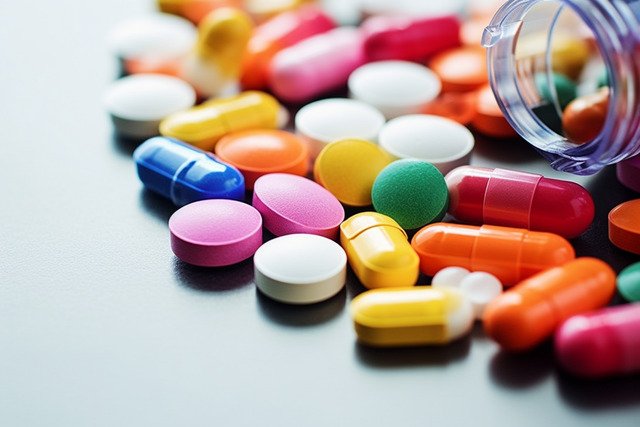ADHD medication worldwide suffer with Attention Deficit Hyperactivity Disorder (ADHD), a neurodevelopmental condition marked by impulsivity, hyperactivity, and inattention. Patients and their families can choose treatments more wisely if they are aware of the distinctions between these two groups.
Comprehending Drugs That Stimulate
The most often prescribed therapies for ADHD, stimulant medicines have been around for a number of decades. These drugs function by raising the brain’s concentrations of specific neurotransmitters, namely norepinephrine and dopamine. This rise lessens hyperactivity and impulsive conduct while improving focus and attention.
Different Kinds of Stimulant Drugs
The two primary types of stimulant drugs are long-acting and short-acting.
- Short-acting Stimulants: These drugs must be taken several times daily and usually have a half-life of 4 to 6 hours. Methylphenidate (Ritalin, Daytrana) and amphetamine (Adderall, Dexedrine) are two examples.
- Long-acting Stimulants: These drugs work for eight to twelve hours, giving them a longer half-life. Because they only need to be taken once a day, they are frequently chosen for their convenience. Among the examples are the extended-release forms of methylphenidate (Concerta, Metadate CD) and amphetamine (Vyvanse, Adderall XR).
Benefits of Medications with Stimulants
- Quick Start of Action: Usually beginning to act within 30 to 60 minutes, stimulants offer immediate symptom alleviation.
- Effectiveness: Studies indicate that in about 70–80% of people with ADHD diagnoses, stimulants can successfully lessen symptoms.
- Flexibility: Personalized dosing regimens based on the patient’s needs are made possible by the availability of both short-acting and long-acting formulations.
The Drawbacks of Stimulant Drugs
- Adverse Reactions: Reduced appetite, anxiety, sleep difficulties, and elevated heart rate are typical side effects. These adverse effects could occasionally be so severe as to call for a prescription adjustment.
- Potential for Abuse: Because stimulant drugs have the potential to be abused or become addicted, they are categorized as restricted substances. This is especially worrying for young adults and teenagers.
- Not Fit for Everybody: Certain medical issues or a history of substance misuse may prevent an individual from using stimulant medications.
Different Non-Stimulant Drug Types
The following non-stimulant drugs are authorized for the treatment of ADHD:
- Sterila (atomoxetine): For ADHD, this is the non-stimulant medicine that is most frequently administered. It functions by raising norepinephrine levels in the brain and is a selective norepinephrine reuptake inhibitor (NRI). It can take many weeks for atomoxetine to take full effect when taken once daily.
Benefits of Medicines That Are Not Stimulants
- Reduced Abuse Risk: Because non-stimulants are not categorized as prohibited substances, there is a lower chance that they will be abused.
- Fewer Side Effects: Since non-stimulant drugs frequently have milder side effects than stimulants, many people handle them better. Dry mouth, weariness, and sleepiness are common adverse effects, though they are typically milder than those brought on by stimulants.
- Appropriate for Co-existing diseases: People who have co-existing diseases, like tic disorders or anxiety disorders, may benefit more from non-stimulant drugs because stimulants may make symptoms worse.
The Drawbacks of Non-Stimulant Drugs
- Delay in Action: Patients who are looking for quick relief may find that non-stimulant drugs take several weeks to fully take action.
- Less Effective for Some: Research suggests that while non-stimulants can be helpful for many individuals, they might not work as well for everyone as stimulants. Merely 40–60% of ADHD patients show positive response to non-stimulant drugs.
- Requirement for Regular Dosing: Some people find it inconvenient to take non-stimulants many times a day
- For patients with more severe symptoms, stimulants might work better, but in less severe cases, non-stimulants might be adequate.
- Prior Treatment History: A non-stimulant medicine can be a preferable option if the patient has tried stimulant drugs in the past and had severe adverse effects or ineffectiveness.
- Coexisting circumstances: Non-stimulant drugs may be more advantageous for those with anxiety, depression, or tic disorders since they are less likely to make their conditions worse.
- A Look at Lifestyle: For busy people or families, the simplicity of taking a single dose each day as opposed to several can be a significant consideration.
- The doctor’s suggestions: In the end, working together with a healthcare practitioner is crucial. They can assist in determining the best course of action, assessing the patient’s particular circumstances, and tracking advancement.
In summary
In the treatment of ADHD, both stimulant and non-stimulant drugs are essential, and it is critical for patients and their families to know the differences between the two. Non-stimulants offer a useful alternative for people who cannot handle stimulants or have particular needs, even though stimulants are frequently the first line of treatment due to their quick onset and effectiveness. The best option will ultimately rely on the specific symptoms, past medical history, co-existing diseases, and lifestyle choices. Assuring that the treatment plan selected fits the patient’s needs and objectives through close collaboration with a healthcare professional can help open the door to a more manageable and satisfying life with ADHD.



